23 F. high temperature in the Twin Cities Friday.
23 F. average high on January 15.
35 F. high on January 15, 2015.
January 16, 1921: Winds gusting up to 59 mph create a 'sand blizzard' across southwest Minnesota and a snowstorm across the north.
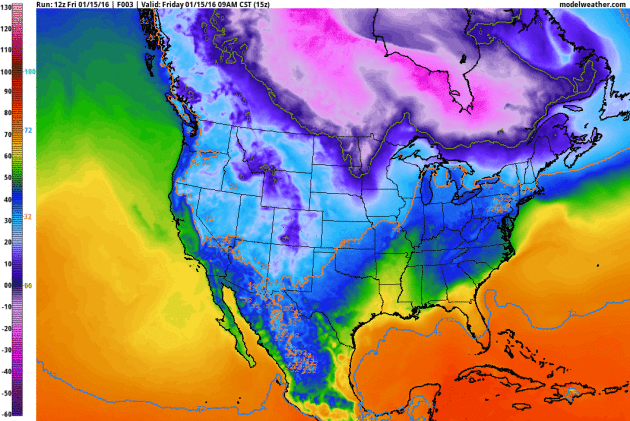
70s Flashback: 80 Consecutive Hours Below 0F?
"It's not the heat, it's the humidity. It's not the cold, it's the wind chill." Leave it to a meteorologist to leave you feeling worse than you thought possible.
Over the next 3 days we'll get a taste of what it was like in the 60s & 70s, a concentrated scoop of polar-flavored gelato. And there WILL be a bitter aftertaste.
Air temperatures should stay below zero into Tuesday morning; a good 72-82 hours of negative numbers. Sunday wind chill values dip to -35, even -45F just south and west of MSP.
The first half of meteorological winter was tame, based on the Winter Misery Index, which factors snow and extreme cold. 2 winters ago we grappled with an extended "polar vortex" - but the harshest winters came during the 60s and 70s; not just days but WEEKS of subzero cold.
Just about the time you throw up your frostbitten hands in despair it'll warm up. I still see a thaw by the end of next week. Hunch: a slowly fading El Nino will keep us milder than average into spring.
"Nothing burns like the cold" wrote George Martin in "Game of Thrones".
Winter is coming? No, winter is most definitely here. What took you so long?
* 2-meter predicted temperatures going out 84 hours courtesy of NOAA's NAM model and AerisWeather.
Tales from the Tundra. Here is the ECMWF prediction for 12z (7 AM) Sunday morning air temperatures; in the -16 to -19F range in the immediate metro. Notice how the relatively mild waters of Lake Superior keep temperatures above 0F downwind. Source: WeatherBell.
Eye-Watering Wind Chill. The same ECMWF model run consistenly drops wind chill values into the -35 to -45F, with the coldest values just south and west of MSP. Under these conditions frostbite on exposed skin is possible within 15 minutes. Take the cold seriously this weekend.
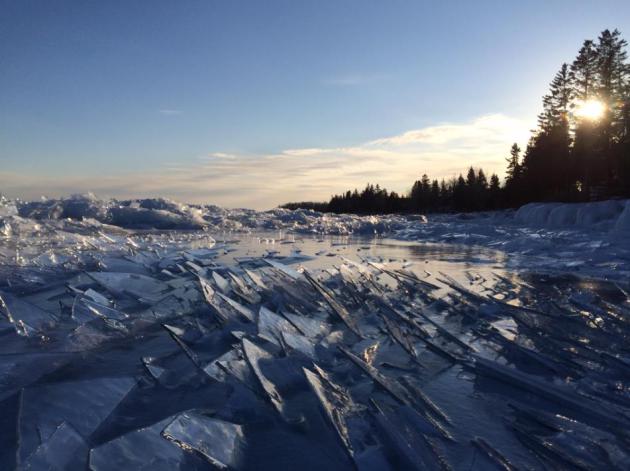
Photo credit: AerisWeather meteorologist Todd Nelson.
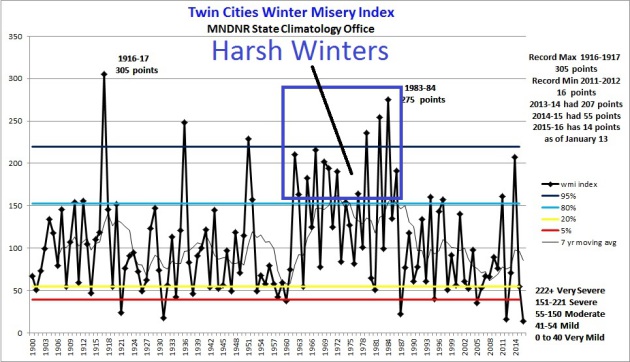
Image credit above: "Global temperature anomaly for 2015 compared to the 1951-1980 average." Image: Berkeley Earth.
Soft In The Middle. What's up with the Midwest's relatively mild and soggy winter, to date? Here's an excerpt from onEarth that caught my eye: "...According to Doug Kluck, a climatologist for the National Oceanic and Atmospheric Administration’s Central Region, as many as 20 different factors may affect weather trends across the country at any given time, and he and other scientist are trying to figure out all the hows and whys in order to help Midwesterners prepare for the future. So far, what Kluck, and Michael Timlin, a climatologist with the Midwestern Regional Climate Center, have been able to parse out are longer-term trends, namely winters with less severe and shorter cold snaps (just like 2015’s). They’re also seeing bigger rain events with longer dry spells in between and have noted that minimum annual temperatures throughout the region have gradually gone up over the past 120 years or so..."
Photo credit above: "A Coast Guard helicopter surveys the region surrounding Cape Girardeau, Missouri, on January 3." Credit: U.S. Coast Guard Aircrews.
Flood Lessons From The Missouri Flood Event. Emergency Management has some good reminders in the wake of extreme December flooding on the Mississippi River; here's the intro: "This is one very informative article about flooding, damages, insurance and your options for disaster relief. It even brought up an issue I had not thought of before. Check out Some Flood Victims in Missouri Didn't Have Insurance; Some Didn't Have Enough. Here are some key points:
- Basic renters insurance doesn't cover flood damage. This is the one that was new to me -- just had not thought about it. The story alludes to the possibility of having it, but never saw it addressed before this article.
- Paid for? Might still need insurance! I wonder if a home is paid for if people also drop their fire insurance? I personally know three people whose homes have had significant fires. It can and does happen.
- Cost of flood insurance. If people think it is high, it is still not at market rates for the number of flood losses across the nation. Taxpayers in general are subsidizing their policies. Another form of entitlement program that people have gotten hooked on..."
Photo credit above: "Camelina seeds." (Courtesy of Agragen).
Why Clean Energy is Now Expanding Even When Fossil Fuels Are Cheap. Here's a clip from a Washington Post analysis: "...Looking out still further, the International Energy Agency said last year that between now and 2020, renewable energy will be the largest area for growth, and predicts 700 gigawatts of added generating capacity. In other words, while half of new generating capacity in 2015 was in the clean energy space, in coming years we may see that percentage grow even higher. Granted, there is still a ways to go before wind, solar, and other renewable energy sources are dominant in generating our electricity. Wind and solar provide about 5 percent of U.S. electricity right now, for instance. Here as across much of the world, electricity generation is still largely dominated by fossil fuels..."
Photo credit above: "Solar panels are seen in the Palm Springs area, California, in this April 13, 2015 photo." Reuters/Lucy Nicholson.
Photo credit: "The city government of Waverly, Minnesota will offset 100 percent of its electricity through a solar garden subscription."
- Wind and solar’s capacity share rises. The 122GW of wind and solar installed in 2015 made up about 50% of the net capacity added in all generation technologies (fossil fuel, nuclear and renewable) globally.
- No impact from low fossil fuel prices. Neither the 67% plunge in the oil price in the 18 months, nor continuing low prices for coal globally and natural gas in the US restrained the boom in clean energy investment....
From Tesla, A New Car Smell That Vegans Can Get Behind. The New York Times has the story; here's the intro: "For the eco-conscious car buyer, Tesla’s luxury electric vehicles,
with their neck-snapping acceleration, are proof that performance
doesn’t have to be sacrificed at the altar of saving the environment.
But for some discerning consumers, there is a nagging problem. The
leather in the seats and steering wheel requires slaughtering animals,
and the cloth substitute doesn’t quite measure up for a vehicle that can
cost more than $100,000. Now, in response, comes the Tesla that even a
luxury-minded vegan could love. Synthetic leather, in a shade Tesla
calls Ultra White, is available as an option for the new Model X sport
utility vehicle..."
Photo credit above: "Leilani Münter, a professional racecar driver, environmental advocate and vegan, with her vegan Tesla in Huntersville, N.C." Credit Travis Dove for The New York Times.

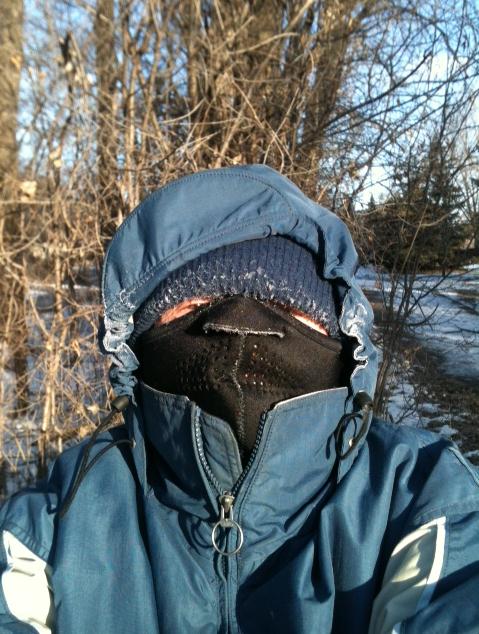
TODAY: Windchill Advisory. Mostly cloudy, feels like -25. Winds: NW 10-20. High: -1
SATURDAY NIGHT: Partly cloudy and frigid. Low: -15
SUNDAY: Dangerously cold under partly sunny skies. Winds: NW 10-15. Wind chill: -35. High: -5
MONDAY: Bright sun, still numb. Winds: W 5-10. Low: -16. High: -2
TUESDAY: Period of light snow, couple inches PM hours? Low: -10. High: 9
WEDNESDAY: Flurries taper, clouds linger. Low: 8. High: 19
THURSDAY: Partly sunny, still chilly. Low: 7. High: 17
FRIDAY: Mostly cloudy, above average - finally. Low: 3. High: 26
* guidance strongly hints at a thaw by next Saturday with highs in the 30s.
** Photo courtesy of my friend, Jack Falker, who lives in Edina.
Climate Stories...
How Scientists Link Extreme Weather to Climate Change. I'm
fascinated by attribution studies, which is still emerging science. How
is a warmer (in many cases wetter) atmosphere increasing the
probability of specific events? Here's an excerpt of a good explainer at
Carbon Brief: "...Human
influence is making some events much more likely, others a bit more
likely, and still others less likely. It is very important we don’t just
focus on the events that have been made much more likely, because a
small increase in the risk of very high-impact events could be just as
important or more so. Eventually, we may start to see events that simply
could not have occurred at all in the absence of human influence on
climate, so I guess for such an event one would have to say it was made
infinitely more likely to occur. But for most of the short-duration,
localised events that most people think of as weather, that point is a
very long way off indeed..."
A Visual Forecast for the End of the Century. I found this interesting, courtesy of Climate Central and Scientific American: "...Multiple factors likely contributed to the recent warmth, including the effects of El Niño, and the unusually strong polar vortex. However, the science points to global warming
as the primary cause which, if left unchecked, will cause a steady rise
in temperature in for decades, at least, and maybe more . The graphic
below from Climate Central looks ahead to see where this trend might take the U.S. by 2100..."

Climate Change Called Top Risk for Economy.
Because it flavors many other troubling trends and hot-spots. The
military calls it a "threat multiplier", impacting water supplies, where
crops can be grown, migration patterns - the list goes on. Here's an
excerpt from TribLIVE: "...That's
the first time that an environmental concern has topped the list of
global risks of the WEF's Global Risks Report and comes after what
meteorologists say was the hottest year on record. “Climate change is
exacerbating more risks than ever before in terms of water crises, food
shortages, constrained economic growth, weaker social cohesion and
increased security risks,” said Cecilia Reyes, chief risk officer at
Zurich Insurance, which helped develop the annual Global Risks Report.
The survey of nearly 750 experts and decision-makers from a variety of
fields, locations and ages was conducted in the autumn of 2015 before
the global warming targets agreed upon in Paris in December..."
Image credit above: "The MetOp-B satellite, one of many that use microwaves to measure the Earth's temperature." Drawing by ESA/Eumetsat.
We Have No Way to Predict the Unintended Consequences of Geoengineering. Slate and Newsweek take a look at how frantic last-minute, man-made attempts to cool the Earth could backfire if there's no international consensus: "...Now is the time, with the wind from Paris at our backs, to set international norms for how geoengineering technologies are tested and deployed and to consider how the U.S. would navigate a global landscape in which different nations want to engineer the climate to different ends. Would Russia want to warm Earth beyond 2 degrees Celsius to turn Siberia into a fertile growing region? Will Vanuatu find a sympathetic billionaire to shield the planet from the sun so that sea levels do not rise so high? More research on geoengineering could help us anticipate the possible ways the technologies could be used..."
Photo credit above: "To prove that reflecting sunlight with sulfates can safely cool Earth, experiments must be large enough in geography and long enough in time frame." Dado Ruvic/Reuters
Michigan Researchers Put Price Tag on Climate Liability for Fossil Fuel Plants. Midwest Energy News has the story; here's the intro: "Coal-fired
power plants across the country could be billion-dollar liabilities for
utilities if their greenhouse gas emissions are challenged in court,
according to researchers at Michigan Technological University.
Should an entity — individuals, groups or governments — take legal
action against utilities for their plants’ greenhouse gas emissions and
contributions to climate change, researchers have developed a way to
determine the amount of monetary damages that might be awarded to
plaintiffs. These polluting plants, therefore, could have significant impact on shareholders, researchers say..."
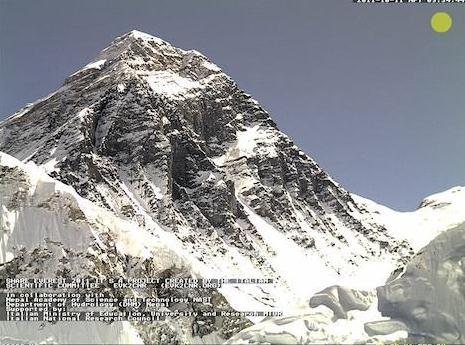
Here's Why Nobody Made It Up Mount Everest Last Year. Climate change and warming glaciers is part of the answer; here's an excerpt at Smithsonian: "...Earlier this year, scientists learned that the size of Everest’s glaciers decreased
by 20 percent between 1961 and 2007 and predicted that some parts of
the glaciers could decline by as much as 99 percent by 2100. Veteran
climbers tell Holley that melting, shifting ice will make the mountain
even more dangerous for climbers..."
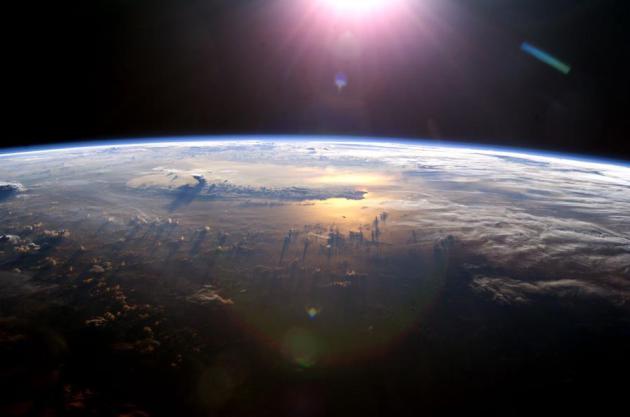
Migration and Climate Change Top Risks Facing Global Economy. Here's the intro to a story at Financial Times: "Forced migration and climate change are the biggest risks facing the global economy this decade, according to 750 experts surveyed by the World Economic Forum. The warning was published in the 11th edition of WEF’s Global Risks Report and in advance of the annual gathering of global leaders at Davos next week. More than 60m people are displaced worldwide, compared with 40m at the end of the second world war. Last year 1m migrated to Europe. The majority of the world’s forced migrants are internally displaced within Africa and the Middle East..." (Photo credit: AFP).
* The report from WEP, The World Economic Forum, is here.
Photo credit above: "An ice core from west Greenland shows a line marking what scientists call a shift from the Holocene epoch to the Anthropocene with glacial sediments giving way to nonglacial organic matter."
Did you know you can create short urls with Shortest and make $$$ from every visitor to your short links.
ReplyDelete